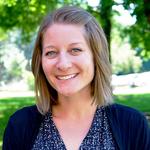
Surgeon General explains COVID-19 racial disparities
During last week’s White House press briefing, Surgeon General Jerome Adams reported statistics that countered the commonly held perception that COVID-19 is the Great Equalizer, capable of infecting anyone, regardless of race, religion, age, or nationality. Black Americans and Latinos, he reported, are at a higher risk of COVID-19 related deaths.
In New York City, these groups’ mortality rates are twice that of white Americans. In Chicago, roughly 70% of total reported COVID-19 deaths are Black Americans, though they make up only about 30% of the population. Similarly, in Michigan, 40% of the total reported deaths are Black Americans, though they make up only 14% of the population. In explaining these disparate outcomes, Adams made one point clear. “There is nothing wrong with you,” he said, before explaining that although people of color are more vulnerable to COVID-19, they are not biologically or genetically predisposed to it.
Instead, he pointed to a “social predisposition” to coronavirus exposure and underlying health conditions that yield more severe COVID-19 complications. Adams cited a number of factors, including dense multigenerational housing, jobs that do not allow employees to work from home, and higher burdens of chronic health conditions like diabetes, heart disease, high blood pressure, and asthma. He outlined targeted federal outreach to communities of color, including social and health supports “so that everybody has an equal chance to be healthy.”
Adams concluded the briefing with a final plea, asking communities of color to adhere to state and federal guidelines to practice handwashing and social distancing. He added additional recommendations for Black Americans and Latinos to avoid engaging in behaviors that could increase virus exposure and health complications like using alcohol, tobacco, and drugs.
The Hill
CNN
Washington Post
Kaiser Health News
When clear language matters: Social predisposition or structural inequities?
The Surgeon General’s remarks were met with criticism, specifically regarding his carefully constructed language. By neglecting to mention structural inequities, critics argued that his warnings about alcohol, tobacco, and drug use implied a false narrative that these behaviors were both unique to Black and Latino communities and the reason for their worse COVID-19 health outcomes. According to critics, his promise to give everyone an equal chance to be healthy also fell short.
National crises bring socio-ecological disparities into the public’s consciousness. We saw this during Hurricane Katrina, the Flint Water crisis, and the recent California wildfires, to name a few. These disparities are the result of longstanding structural racism, chronic disinvestment, discriminatory policy, and other problematic systemic factors. While the pandemic response may thoughtfully include specific support programs to protect the country’s higher risk populations, bailout packages are insufficient when these groups have already been given an unequal and inequitable chance to be healthy in non-pandemic times.
Black and Latino workers are disproportionately impacted by unemployment. Black Americans are more likely to live in urban areas with dense housing, where they may experience environmental racism through poor air and water quality. These groups are more likely to experience wage gaps and have lower health insurance coverage. They are more likely to experience biases from healthcare providers.
Immigrant families, Indian Country, and rural America, too.
When initial social distancing recommendations took hold and states rolled out their stay-at-home orders, it became rapidly apparent that the pandemic would reveal more than unequal disease burdens. Recommendations to stay home are targeted to people who are able to do so—people who are still employed and can work remotely, perhaps receive employer-provided health insurance, have safe home environments, and are not working in front line, essential services. For many, these recommendations can be divisive when such public health messages do not reflect their own realities.
Distance learning and working from home present barriers for the 21 million Americans without high-speed internet and the 21.3 million who lack any internet access. Although this primarily impacts rural America, urban counties that already experience poverty and inconsistent healthcare access are also affected. This digital divide also impacts immigrant families who navigate language barriers, lack of education about certain technologies, or a shortage of devices for their children who are learning from home. There are additional challenges, too, like fears of deportation if seeking public services or recovering from the emotional trauma and uncertainty experienced in refugee camps.
Historical trauma and structural oppression also exacerbate the COVID-19 crisis in American Indian/Alaska Native (AI/AN) communities. Bureaucratic delays, passive federal responses, reliance on underfunded health programs, and reminders of the devastating epidemics that decimated AI/AN populations in centuries past are only part of the problem. These groups experience disproportionately higher rates of preconditions and risk factors for COVID-19, including diabetes, hypertension, and cardiovascular disease.
COVID-19 testing is inaccessible in most places and hospitals that can treat severe symptoms often require traveling long distances. Cases may go undiagnosed or their treatment may be delayed. Additionally, federal guidelines to social distance are insufficient for cultures that honor community cohesion and multigenerational gathering. Recommendations to increase handwashing becomes divisive when some communities lack electricity and clean, running water.
Washington Post
Vox
Minnesota Public Radio
The Guardian
STAT News
A call to action
There is no question that most Americans feel the physical or emotional burdens of this pandemic. As we grieve our loss of jobs and routines, manage the fear of uncertain economic futures, and work through feelings of lost autonomy and control, we must remember that disadvantaged groups endure this reality every day. And they will endure the lasting impacts of COVID-19 in their communities more severely. In Dr. Anthony Fauci’s words, “When all this is over...we will get over coronavirus, but there will still be health disparities, which we really do need to address."
I challenge my readers to remember what our acute experiences feel like when this ends and to channel these feelings into advocacy, research, and action that break down structural inequities and actualize the Surgeon General’s vision to give everybody an equal chance to be healthy.
